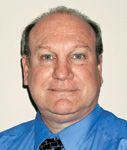California accepts 'tech-check-tech' in hospitals
Pharmacists in California have finally agreed to technicians checking technicians in hospital settings. Buoyed by studies showing that putting hospital pharmacists on the floor can reduce medication errors and patient deaths, the state board of pharmacy has voted to let techs check medication cassette fills by other technicians.

"What we have demonstrated is that technicians who are trained to check unit-dose cassettes are at least as accurate as pharmacists," said Peter Ambrose, Pharm.D., clinical professor at the University of California San Francisco School of Pharmacy. Ambrose presented interim results of a two-year study of tech-check-tech at Cedars-Sinai Medical Center in Los Angeles to the board earlier this year. Hospital technicians routinely check others in Kansas, Kentucky, Minnesota, and Washington, said Rita Shane, Pharm.D., Cedars-Sinai Medical Center director of pharmacy services.
"The beauty of techs checking techs is that it frees R.Ph.s to do what they are trained to do-deal personally with physicians and patients," Ambrose told Drug Topics. "We documented very well the ability of pharmacists on the floor to prevent medication errors at the prescribing and administration steps."
Of the other medication-related encounters, 92.8% were pharmacist dosing decisions made by physician request. The balance were drug information, STAT orders, non-formulary requests, and rounding issues. The study will run through the end of 2006.
"This was a patient-safety issue," said Claudia Foutz, executive VP of the California Society of Health-System Pharmacists (CSHP). "That is a distinct difference from other reviews of this issue in the past." Recasting tech-check-tech as an inpatient safety issue was key in winning CPhA support, she said.
Tech-check-tech has been a flash point between retail and hospital pharmacists in California for two decades. Ambrose and Shane said hospital techs commonly checked techs in the 1980s. The state board banned the practice in the early 1990s when chain pharmacies sought to extend tech-check-tech to community practice. Technician battles put CSHP and the California Pharmacists Association on opposite sides of the issue. CPhA saw inpatient tech-check-tech leading to technicians replacing pharmacists in most roles, including direct patient interactions.
"We would never extrapolate our inpatient data to the community setting, where technicians have entirely different training and supervision standards," Shane said.
The change can't come soon enough for hospital pharmacists. When Ambrose did his pharmacy residency at Long Beach Memorial Medical Center, techs routinely checked techs on cassette fills. R.Ph.s felt frustrated and limited when the board ordered them to check cassette fills a decade ago, he said. "The board took pharmacists out of the clinical arena and forced us back into checking cassettes," he added. "We can put pharmacists to much more effective use by keeping them out there with physicians and patients."
In the 1990s, Ambrose and Shane collaborated on studies showing that techs had lower error rates checking techs than pharmacists did. Because the issue was viewed as a turf battle between pharmacists and techs, the board split. Hospital-based members supported tech-check-tech; community-based members and consumer representatives opposed the practice.
Presenting tech-check-tech as a potential patient-safety measure helped bridge the gap. In 2004, the board approved a two-year study to evaluate the impact of putting more pharmacists on the floor at Cedars-Sinai by letting specially trained pharmacy techs check medication cassette fills. Final data will be released in early 2007, Ambrose said.